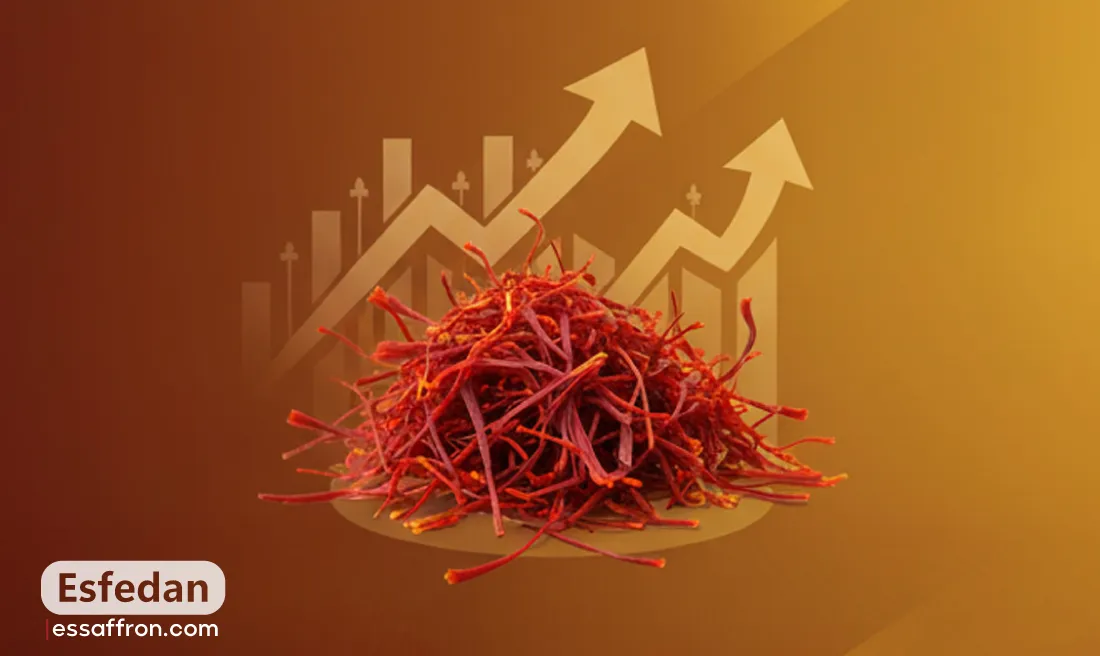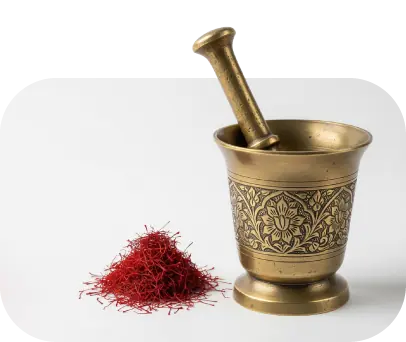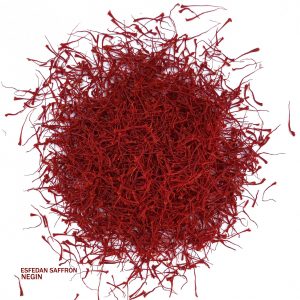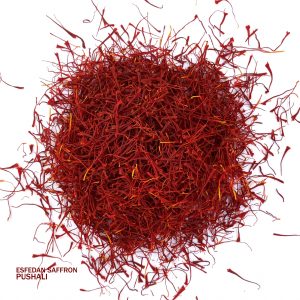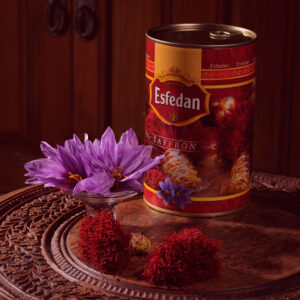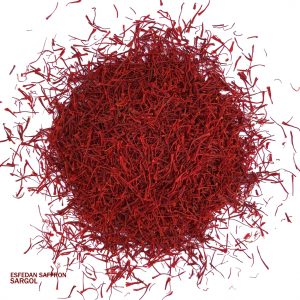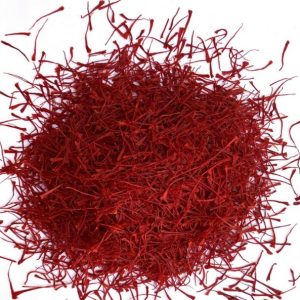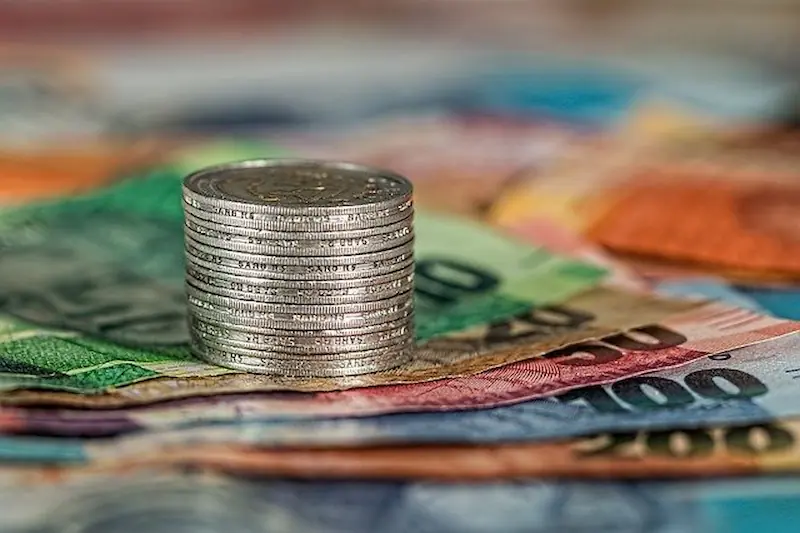Saffron is one of the most costly spices in the world, and its price is affected by factors like quality, supply, and demand. On this page, we have covered saffron price in 2025, factors that affect saffron price, saffron price variation in different markets around the world, and much more. Additionally, you will find details about saffron price per kg, saffron price per gram, and a comparison of saffron prices in different markets.
Saffron Price: How Much Does Saffron Cost?
The current market rate for saffron can vary significantly, typically ranging from $5 to $15 per gram. This variation is due to several factors, including quality grade, origin, and market conditions at the time of purchase. For bulk or wholesale purchases, 1 kg of saffron can cost between $1,500 and over $10,000, depending on the volume purchased, the specific quality, and whether it is sourced directly from growers or through cooperatives.
As a result, the cost of saffron per gram and per kilogram reflects these complex factors. The cost for 1 pound of saffron (approximately 454 grams) would also fall within this wholesale range, proportionally adjusted. This current market range is essential information for consumers seeking to purchase smaller quantities of high-quality saffron for personal use. At the same time, businesses that require larger volumes for manufacturing saffron-infused products must also be aware of these wholesale prices. The total cost of saffron takes into account not only the value of the spice itself but also the expenses related to cultivation, harvesting, processing, quality control, packaging, and distribution, all of which contribute to saffron’s status as one of the most expensive spices in the world.
Wholesale Saffron Price per Gram in 2025
If you’re looking to buy wholesale saffron, the price per gram will generally be more affordable compared to retail prices. On average, wholesale saffron prices start at around $2 to $4 per gram depending on quality and the quantity you purchase.
Note: Prices can fluctuate based on global market conditions and the grade of saffron, so it’s always best to check current rates.
For bulk purchases, Wholesale Saffron products and get an instant price quote for larger quantities. You’ll be able to explore different saffron grades and request a personalized price right away!
Saffron Price per Gram Retail in 2025
For retail buyers, the price of saffron per gram varies significantly depending on the brand, packaging, and purchase location. Typically, retail saffron prices per gram in 2025 range from Y dollars, but can go higher depending on the quality and the retailer. Retail buyers generally compare prices to ensure they get the best deal based on their needs.
Daily price of saffron
warning
Please note that these prices are provided for reference only and are subject to change based on various circumstances. To receive an accurate quotation and professional advice regarding additional costs and import procedures, please contact us.
| Saffron Price per kg, November 2025 – Premium Quality & Best Rates | |
| Product specification & quality | Price US$ |
| Extra Super Negin premium saffron | 1442 USD |
| Super Negin premium saffron | 1425 USD |
| Super Negin saffron | 1412 USD |
| Negin saffron | 1407 USD |
| Super Sargol saffron | 1393 USD |
| Sargol Saffron | 1379 USD |
| Brocken Sargol Saffron | 1289 USD |
| Super Pushal Qalamdar | 1285 USD |
| Pushal Saffron | 1225 USD |
| Saffron Bunch | 1205 USD |
| Saffron Style | 356 USD |
| Saffron pollen | 312 USD |
| Sargol saffron powder | 1366 USD |
| Pushal Saffron Powder | 1254 USD |
| Bunch, saffron powder | 1199 USD |
| Style Saffron powder | 339 USD |
| Complete- saffron dried flowers | 432 USD |
| Complete saffron-dried buds | 436 USD |
Saffron Price per kg, October 2025 |
|
| Product specification & quality | Price US$ |
| Extra Super Negin premium saffron | 1,414 USD |
| Super Negin premium saffron | 1,396 USD |
| Super Negin saffron | 1,385 USD |
| Negin saffron | 1,380 USD |
| Super Sargol saffron | 1,365 USD |
| Sargol Saffron | 1,350 USD |
| Brocken Sargol Saffron | 1,345 USD |
| Super Pushal Qalamdar | 1,252 USD |
| Pushal Saffron | 1,232 USD |
| Saffron Bunch | 1,180 USD |
| Saffron Style | 348 USD |
| Saffron pollen | 306 USD |
| Sargol saffron powder | 1,340 USD |
| Pushal Saffron Powder | 1,230 USD |
| Bunch, saffron powder | 1,175 USD |
| Style Saffron powder | 331 USD |
| Complete- saffron dried flowers | 423 USD |
| Complete saffron-dried buds | 428 USD |
The saffron price list on 15/09/2025 |
|
| Extra Super Negin premium saffron | 1,569 USD |
| Super Negin premium saffron | 1,549 USD |
| Super Negin saffron | 1,535 USD |
| Negin saffron | 1,523 USD |
| Super Sargol saffron | 1,460 USD |
| Sargol Saffron | 1,420 USD |
| Brocken Sargol Saffron | 1,390 USD |
| Super Pushal Qalamdar | 1,352 USD |
| Pushal Saffron | 1,332 USD |
| Saffron Bunch | 1,234 USD |
| Saffron Style | 348 USD |
| Saffron pollen | 306 USD |
| Sargol saffron powder | 1,375 USD |
| Pushal Saffron Powder | 1,343 USD |
| Bunch, saffron powder | 1,204 USD |
| Style Saffron powder | 331 USD |
| Complete- saffron dried flowers | 423 USD |
| Complete saffron-dried buds | 428 USD |
The saffron price list on 23/05/2025 |
|
| Extra Super Negin premium saffron | 1,545 USD |
| Super Negin premium saffron | 1,509 USD |
| Super Negin saffron | 1,488 USD |
| Negin saffron | 1,350 USD |
| Super Sargol saffron | 1,391 USD |
| Sargol Saffron | 1,356 USD |
| Brocken Sargol Saffron | 1,271 USD |
| Super Pushal Qalamdar | 1,332 USD |
| Pushal Saffron | 1,332 USD |
| Saffron Bunch | 1,216 USD |
| Saffron Style | 343 USD |
| Saffron pollen | 302 USD |
| Sargol saffron powder | 1,354 USD |
| Pushal Saffron Powder | 1,323 USD |
| Bunch, saffron powder | 1,186 USD |
| Style Saffron powder | 326 USD |
| Complete- saffron dried flowers | 417 USD |
| Complete saffron-dried buds | 422 USD |
Saffron Price List on 25/04/2025 |
|
| Extra Super Negin premium saffron | 1,587 USD |
| Super Negin premium saffron | 1,550 USD |
| Super Negin saffron | 1,529 USD |
| Negin saffron | 1,387 USD |
| Super Sargol saffron | 1,430 USD |
| Sargol Saffron | 1,373 USD |
| Brocken Sargol Saffron | 1,307 USD |
| Super Pushal Qalamdar | 1,398 USD |
| Pushal Saffron | 1,369 USD |
| Saffron Bunch | 1,249 USD |
| Saffron Style | 352 USD |
| Saffron pollen | 310 USD |
| Sargol saffron powder | 1,391 USD |
| Pushal Saffron Powder | 1,360 USD |
| Bunch, saffron powder | 1,219 USD |
| Style Saffron powder | 335 USD |
| Complete- saffron dried flowers | 428 USD |
| Complete saffron-dried buds | 434 USD |
Saffron Price List on 26/03/2025 |
|
| Extra Super Negin premium saffron | 1,466 USD |
| Super Negin premium saffron | 1,432 USD |
| Super Negin saffron | 1,413 USD |
| Negin saffron | 1,282 USD |
| Super Sargol saffron | 1,321 USD |
| Sargol Saffron | 1,269 USD |
| Brocken Sargol Saffron | 1,208 USD |
| Super Pushal Qalamdar | 1,292 USD |
| Pushal Saffron | 1,265 USD |
| Saffron Bunch | 1,154 USD |
| Saffron Style | 326 USD |
| Saffron pollen | 287 USD |
| Sargol saffron powder | 1,285 USD |
| Pushal Saffron Powder | 1,257 USD |
| Bunch, saffron powder | 1,126 USD |
| Style Saffron powder | 303 USD |
| Complete- saffron dried flowers | 395 USD |
| Complete saffron-dried buds | 401 USD |
saffron price list on 08/02/2025 |
|
| Extra Super Negin premium saffron | 1455 USD |
| Super Negin premium saffron | 1421 USD |
| Super Negin saffron | 1402 USD |
| Negin saffron | 1272 USD |
| Super Sargol saffron | 1311 USD |
| Sargol Saffron | 1260 USD |
| Brocken Sargol Saffron | 1199 USD |
| Super Pushal Qalamdar | 1335 USD |
| Pushal Saffron | 1216 USD |
| Saffron Bunch | 1146 USD |
| Saffron Style | 324 USD |
| Saffron pollen | 285 USD |
| Sargol saffron powder | 1276 USD |
| Pushal Saffron Powder | 1248 USD |
| Bunch, saffron powder | 1118 USD |
| Style Saffron powder | 301 USD |
| Complete saffron-dried flowers | 392 USD |
| Complete saffron-dried buds | 398 USD |
Note: The prices listed below are quoted EX-Work (EXW) only. This means that many additional costs will be added to these prices, especially if you are an importer in your own country. Therefore, please make sure to contact us for an accurate quotation
before making any decisions: These prices may vary depending on various conditions and additional costs involved in the import process. Factors that can affect the final price include:
- Transportation costs from the production site to the customs airport: These costs may include shipping from the factory to the airport, domestic freight charges, and other expenses associated with moving goods to their destination.
- Export taxes: For exports to certain countries, additional export taxes may apply, which will increase the final price.
- Laboratory testing fees for export certification: In many countries, various tests are required to ensure product quality, which involve additional costs.
- Certificates of origin and compliance documents: These certificates are necessary to verify the authenticity of the goods and compliance with international standards, and they also incur fees.
- Exchange rate differences between official and market rates: Currency fluctuations and the difference between official and open market exchange rates can significantly affect the final price.
- Customs clearance procedures: Customs processes in each country can be complex and costly, and should be considered in advance.
- X-ray inspection: To ensure product quality and safety, some shipments must undergo X-ray inspection, which also adds to the cost.
- Final delivery costs: After the goods arrive in the destination country, local delivery costs to the final destination (such as a warehouse or buyer’s location) must also be considered.
Saffron Price Trends Over Time
Over time, saffron prices have generally increased, although there have been occasional fluctuations in the market. This is due to a combination of factors, including the annual harvest yield (which can vary widely and unpredictably from year to year), global economic conditions (which impact buyers’ purchasing power), and steadily growing demand from multiple industries. While the culinary market remains the dominant force, an increasing interest in the cosmetic and pharmaceutical potential of saffron is driving demand even higher.
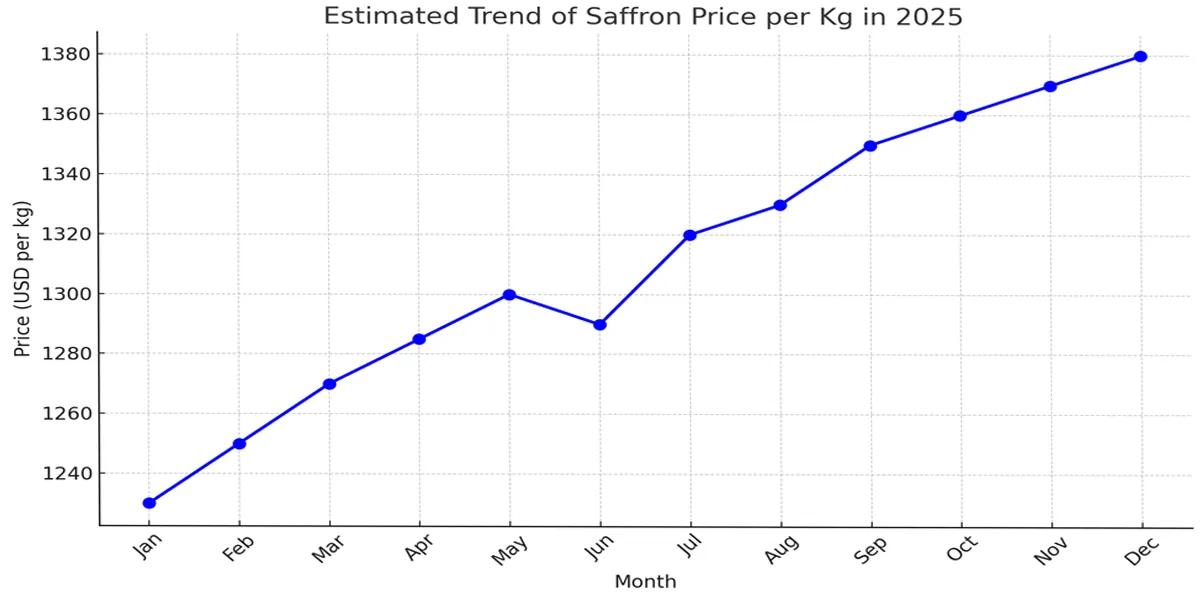
Short-term price changes can also be influenced by local factors, such as weather events in major producing countries that reduce harvest yields or geopolitical events that affect trade and supply chains. However, the overall long-term trend is clear: saffron is, and will continue to be, a high-value product. Prices tend to rise during times of lower supply or when there is a sharp increase in demand from the global market, reflecting the market’s sensitivity and the ongoing long-term upward trend in saffron prices.
read more: Saffron Prices 2025 to 2035 Market Analysis
The Difference Between Commercial and Retail Saffron Prices
Retail prices, such as those found at specialty or grocery stores and online, naturally account for the additional overhead and value-added costs associated with branding, high-end packaging (for storage and aesthetics), large-scale marketing and advertising, logistics/distribution, and the retailer’s own profit margins. Individual consumers typically pay a much higher price per gram of saffron compared to the wholesale price.
Wholesale or “commercial” saffron prices, on the other hand, are used for bulk orders purchased by large, industrial clients, high-volume foodservice operations, or other resellers. Prices per unit are significantly lower due to the economies of scale achieved through high-volume transactions. Additionally, the number of intermediaries in the supply chain is greatly reduced (fewer markups) and may consist of direct purchasing from the growers or cooperatives themselves, with little to no processing or packaging costs.
Understanding this fundamental difference between commercial vs. retail saffron prices will help buyers at all levels make more informed and cost-effective purchasing decisions, and understand saffron prices across different market segments.
Kinds of Iranian Saffron & Their Price
To talk about saffron price, you must be familiar with all types of Iranian saffron. Iranian saffron is the best saffron in the world and its price can vary according to its grade. The most common types of Iranian saffron are as follows:
Saffron Sargol (Red Thread)
This is the most commonly used saffron. It contains only the red stigmas and has a deep red color and strong aroma. It is used in cooking and medicine.
Contact us to get the exact prices for wholesale as they are changeable due to market conditions, but generally, the prices for 2025 are around $1,200 to $1,400 per kg.
To view the product, click on the Wholesale Sargol Saffron.
Saffron Pushal
Pushal is made from the red stigmas and a small part of the yellow style. It is not as strong as Sargol but is still of good quality and is more affordable.
Contact us to get the exact prices for wholesale as they are changeable due to market conditions, but generally, the prices for 2025 are around $1,000 to $1,200 per kg.
To view the product, click on the Wholesale Saffron Pushal.
Saffron Negin (Premium Grade)
This is the highest quality saffron and is made of long, red stigmas with very little yellow parts. Negin saffron has the best color and aroma and is considered the most premium.
Due to its premium quality, the price is generally higher and ranges from $1,500 to $1,700 per kg in 2025, but please contact us for the exact prices as they are changeable due to market conditions.
To view the product, click on the Wholesale Saffron Negin.
Saffron Bunch (Kesar)
This is a lower-grade saffron that contains more yellow parts. It is often used for industrial purposes, perfumes, or cheaper culinary products.
Note: Prices are generally lower and range from $800 to $1,000 per kg, but please contact us for the exact prices as they are changeable due to market conditions.
To view the product, click on the Wholesale Saffron Bunch.
Why Is Saffron So Expensive? 11 Saffron Price Factors
1. Labor-Intensive Harvesting and Processing:
Saffron cultivation and harvesting are highly labor-intensive. Each flower has only three stigmas, which are the parts used to make saffron. It takes about 150,000 to 200,000 flowers to produce one kilogram of saffron threads. Harvesting the flowers and then carefully extracting the stigmas must be done by hand to prevent damage. The work is meticulous and time-consuming, with no room for mechanization if the quality is to be maintained. The drying process is equally laborious and must be carefully controlled to preserve the saffron’s aroma and potency.
2. Geographical Limitations:
Saffron is a spice that can only be grown in specific climatic conditions. It requires a long, hot, dry summer for the corm to enter dormancy and a cold, wet winter to induce flowering. This climatic sensitivity means saffron can only be produced on a significant scale in a few regions of the world, such as Iran, Spain, India (especially Kashmir), and Greece. The limited geography suitable for saffron cultivation restricts the global supply, keeping prices high.
3. Low Yield per Plant:
The saffron crocus plant yields very little in terms of spice production. The amount of saffron that can be harvested from a given area of land is significantly less than what most agricultural crops can produce. This low productivity, combined with the high labor costs, contributes to the spice’s high price.
4. Short Harvest Season:
Saffron’s harvest season is very short, typically around two to three weeks. This narrow window, combined with the delicate nature of the flowers, means that harvesting must be done quickly and efficiently. This necessitates a large, skilled labor force that must be trained or recruited specifically for the harvest season, which can increase the cost.
5. High Cost of Production:
Growing saffron is more expensive than many other crops. The intensive labor required for planting, harvesting, and processing, combined with the specific agricultural conditions needed for saffron to thrive, results in higher production costs. These costs are then reflected in the final price of the spice.
6. Pests and Diseases:
Saffron crops are vulnerable to various pests and diseases, which can reduce yield and quality. Protecting crops from these threats requires additional effort and expense, further increasing the production cost.
7. Increased Global Demand:
As more consumers become aware of saffron’s culinary and purported health benefits, demand for the spice has been increasing globally. This rising demand, coupled with the limited supply, naturally leads to higher prices.
8. Market Speculation:
Like any commodity, saffron prices can be affected by market speculation. If traders anticipate a future shortage of saffron, they may buy large quantities now, reducing supply in the market and driving up prices.
9. Export Tariffs and Taxes:
The export of saffron from producing countries is often subject to tariffs and taxes, which can significantly increase its cost. These added expenses are usually passed on to the consumer.
10. Special Storage Requirements:
Saffron requires specific storage conditions to maintain its quality and potency. Improper storage can lead to a loss of flavor and aroma, reducing the spice’s value. The need for careful storage and handling adds to the overall cost.
11. Branding and Retail Markup:
Premium saffron brands can also affect the price. Retailers often apply a markup on the saffron they sell to cover their costs and make a profit. The price can also be influenced by the brand’s reputation, with more well-known or prestigious brands often commanding a higher price.
Saffron Buying Tips: Save Money Without Compromising on Quality or Potency
While saffron is by nature a gourmet and expensive spice, savvy buying practices can reduce your expenses, while not sacrificing quality or potency of the spice. Wise buying decisions ensure you get good value for the price of saffron.
- Buy in Bulk (if a Regular User):
If you own a restaurant or commercial kitchen, or are a home cook who regularly uses saffron, or if you have a medical need that requires regular saffron use, you can often buy in bulk to reduce the price per gram. This will be lower than the charge for small retail packets. When buying in bulk, it is essential to ensure the spice is stored properly, as exposure to air, heat, or light can degrade its freshness, aroma, and color intensity over time. These all, of course, have a direct impact on the price of saffron per gram, and ultimately on the value of what you are getting.
- Look for Discounts and Offers:
Watch for discounts, seasonal offers, or special promotions from trusted saffron suppliers. This can help you buy at a lower price and maximize the value of saffron. Such discounts and offers may be available during major holidays or festivals, culinary events, or as part of promotional campaigns. Consider subscribing to newsletters from trusted saffron brands to receive updates on such offers and make purchases at the right time.
- Don’t Sacrifice Quality for a Low Price:
It goes without saying that you should never sacrifice the quality of saffron just to get a lower price. Beware of exceptionally low prices on saffron, as these may be a warning sign of counterfeiting, substandard quality, or old stock with diminished potency. A small amount of good-quality, authentic saffron will always provide better color, aroma, and taste than larger amounts of lesser-quality saffron. In the long run, certified, high-quality saffron will provide you with the best value for your saffron investment.
Does Saffron Really Cost That Much?
Consumers and chefs alike are often left wondering, given its steep price, does saffron really cost that much? The answer, quite simply put, is yes. Objectively speaking, saffron is worth its price because of its unique and complex nature, which, in most cases, cannot be substituted in its full capacity. For these reasons, saffron’s price is just a small representation of its actual and extended value.
saffron price per kilogram
The price of saffron varies across different continents and countries. It depends on the type of saffron, its origin, and its quality. Various countries produce and sell saffron, but the leading producer, with over 85% market share, is Iran. Persian or Iranian saffron is the most popular saffron worldwide. Even Iranian saffron comes in various quality types, and each type has a different price per gram. Therefore, depending on various factors such as the type of saffron, the price per gram or kilogram may fluctuate, making it impossible to determine the exact saffron price. However, we offer competitive prices for our high-quality saffron. Contact us to get the latest quote on Premium Esfedan Saffron.


